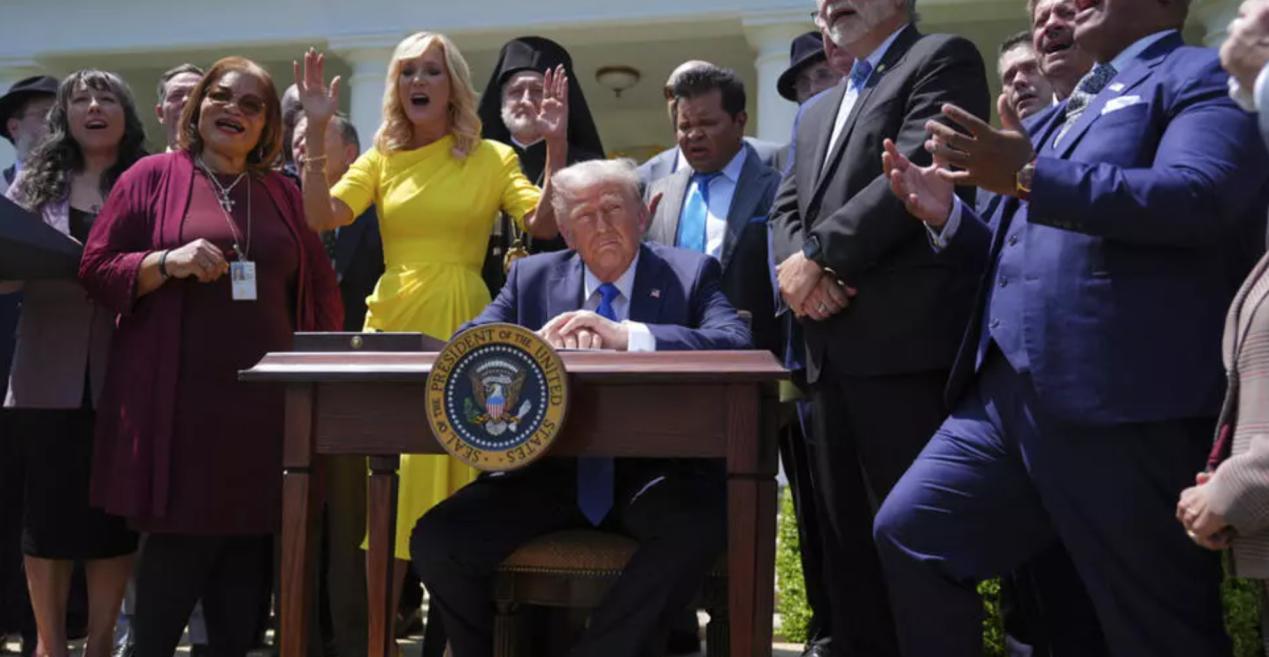
On May 4, 2025, US President Donald Trump announced on the social media platform Truth Social that he would authorize the Department of Commerce and the US Trade Representative to impose a 100% tariff on all foreign-made films entering the United States. This policy, under the guise of "national security," has sparked intense controversy within the film and television industry and among economists. Behind the tariff policy lies a combination of multiple predicaments such as a continuous four-year decline in Hollywood's production volume, the impact of streaming media on traditional cinemas, and the prominent cost advantages of overseas production. Trump's attempt to reverse the process of globalization through tariff barriers may further undermine the foundation of the US film and television industry.
I. Tariff Policy: Trade Protection Disguised as "National Security"
In his statement, Trump claimed that the US film industry is "rapidly dying" and that other countries are luring American producers to leave through tax incentives and location subsidies, posing a "national security threat." He specifically pointed out that the severe damage to Hollywood and other regions' film and television industries is the result of "coordinated actions by other countries." This logic of linking the film and television industry to national security is similar to Trump's previous tariff policies on traditional manufacturing industries such as steel and automobiles.
From the data, it is clear that the US film and television industry is facing a crisis. From 2021 to 2024, overall film and television production spending in the United States decreased by 28%, and the number of shoots in the Greater Los Angeles area in the first quarter of 2025 decreased by 22% compared to the same period last year. At the same time, the cost advantages of overseas production have become more prominent: the United Kingdom offers a 30% tax credit for "Avengers: Endgame," New Zealand provides a 15% cash rebate for "Avatar 3: Fire and Ash," and Australia offers up to 40% subsidies for international projects through its "Location Incentive Program." Under the dual drive of "cost - subsidy," the outflow of American producers has become a trend.
II. Industry Turmoil: The Chain Reaction from Production Costs to Consumer Markets
The impact of tariff policies on the film and television industry chain has exceeded expectations. On the production side, the cost of an American film shot in Canada may increase by more than 50%, forcing producers to either cut special effects budgets or switch to expensive domestic locations. On the distribution side, a 100% tariff will lead to higher ticket prices for imported films, further shrinking the North American market. Gower Street Analytics has lowered its 2025 North American box office forecast from $9.7 billion to $9.5 billion, while Ampere Analysis data shows that the number of streaming subscriptions in the first two months of this year has decreased by 20% year-on-year, indicating a double contraction in both cinema and streaming.
On the consumption side, American households' spending may decrease by $2,500 to $7,600 due to tariffs, with middle-income families' entertainment spending dropping by 9.5%. This economic pressure will directly translate into a decline in moviegoers: North American box office revenue has decreased by 12.5% year-on-year this year, and the poor performance at the Sundance Film Festival reflects the survival crisis in the independent film market.
III. The Backlash of Globalization: Can Protectionism Save American Film and Television?
Trump's tariff policy is essentially an anti-globalization move, attempting to reshape the film and television industry chain through administrative means. However, historical experience shows that protectionism often exacerbates industrial hollowing out: in the 1980s, the United States imposed tariffs on Japanese cars, resulting in the loss of technological competitiveness by the Big Three automakers in Detroit; after the tariff increase on China in 2018, the number of manufacturing jobs in the United States did not increase but decreased.
The core competitiveness of the film and television industry as a cultural and creative industry lies in creativity and talent. When the UK provided the filming rights of London landmarks for "Mission: Impossible 8" and New Zealand built a virtual production base for the "Avatar" series, the United States lost projects due to high costs, union disputes, and wildfire disasters. Tariff policies cannot solve these problems; instead, they may accelerate the outflow of talent: director James Cameron has already planned to transfer some scenes of "Avatar 4" to Canada, and Marvel Studios' filming plans in London are still advancing.
In this tariff storm, the fate of Hollywood hangs in the balance. If the policy is implemented, American audiences may see more low-budget films shot domestically, but they may also lose opportunities for international cultural exports like the "Harry Potter" series. Trump's "national security" narrative ultimately cannot hide the fact that in the era of globalization, attempting to block the film and television industry with tariff barriers is like trying to hold back the tide with a sandcastle.

The U.S. third-quarter GDP growth rate, strikingly highlighted at 4.3%, not only surpassed market expectations but also earned the label of "the fastest in two years."
The U.S. third-quarter GDP growth rate, strikingly highligh…
Recently, US personnel intercepted a "Century" super oil ta…
According to Xinhua News Agency, the subtle changes in the …
The rapid development of artificial intelligence has brough…
In December 2025, Taiwan's political scene was shaken by a …
When Apple appears for the Nth time on the list of penaltie…